mission

Misión
Nuestro cometido es hacer una diferencia visible en el mundo en que vivimos por medio de 4 de las herramientas esenciales del siglo 21. Nuestro objetivo es hacer que estos principios forman parte de su ADN. Nuestra meta es lograr que estos principios se vuelven esenciales en: las empresas, administración pública y la educación.
Visión
![]()
Los pilares de nuestra empresa están representados por los 4 brazos de la Cruz de Malta en nuestra marca. La Cruz tiene un profundo significado para mí. En primer lugar porque simboliza la procedencia tanto Edward de Bono como el mio, y en segundo lugar, porque representa una cruzada, una misión.
Creo firmemente que estos cuatro pilares son requisitos fundamentales para navegar el Siglo 21. Hace 50 años Martin Luther King tuvo un sueño, y me gustaría creer que todos la tenemos. Nuestras áreas de especialización y todo aquello que está alineado con ellos como talento, pasión, respeto, la objetividad, la tenacidad, el compromiso, la excelencia y la alegría son la REVOLUCIÓN POSITIVA que conducirá el Matrix hacia adelante. Future + (Futuro Positivo)
Somos una comunidad global. Los grupos de gente magnifica y excepcional a bordo son:
1. Colegas y Trainers del mundo bDTS (deBono Thinking Systems)
2. Colaboradores y socios especializados en futuras tendencias, creatividad , liderazgo y valores
3. “Embajadas” que promocionan nuestro trabajo / “embajadores” de nuestro trabajo
Nuestra área de expertise radica en:
“La creatividad implica romper patrones establecidos con el fin de observar las cosas de una manera diferente”. Desde la publicación de su primer libro académico sobre el tema “El Mecanismo de la Mente” (Penguin 1969), Edward de Bono ha sido el campeón MUNDIAL del pensamiento creativo como habilidad adquirida. Basado en las investigaciones científicas, y la comprensión de cómo funciona el cerebro humano, de Bono fue un precursor de la neurociencia como lo conocemos hoy, cruzando de la esfera y ámbito académico hacia el mundo mundano de los negocios, la educación y la administración pública. La mecánica de la creatividad son una práctica generalizada, con la palabra “operacy” (operatividad), término acuñado por de Bono como el quid pro del proceso. Se requieren tres ingredientes básicos para florecer en tu ADN: i) actitud, ii) motivación y iii) disciplina sistemática de habilidades de pensamiento.
Según el estudio llevado a cabo en 2010 por IBM, la única habilidad de liderazgo más importante que es y será necesario en un futuro muy próximo es la creatividad. El siguiente de la línea son los valores, como se ve en la obligación de llevar “integridad” en la ecuación. Aproximadamente el 60% de los Directores Generales encuestados mencionaron creatividad como la más importante calidad de liderazgo, en comparación con un 52% por integridad y el 35% para global thinking. Líderes en el campo de la creatividad también están más dispuestos a romper con el statu quo de la industria, las empresas y modelos de ingresos, y son 81% más inclinados a cualificar la innovación como una “capacidad crucial.” Las organizaciones de mayor éxito co-crean productos y servicios con sus clientes, y integran los clientes en los procesos básicos. Están adoptando nuevos canales para conectar y permanecer en sintonía con los clientes. Aprovechándose de los datos disponibles, los CEOs intimidan con el cliente convirtiéndolo en su prioridad número uno. Gestionan mejor la complejidad en nombre de sus organizaciones, clientes y socios. Simplifican los procesos, operaciones y productos, y cada vez más tienen mas destreza para cambiar la forma de trabajar, tener acceso a recursos y entrar en los mercados en todo el mundo. En comparación con otros CEOs, los dirigentes dextrosos esperan que 20 por ciento más de sus ingresos en el futuro vendrán de fuentes nuevas.
(Fuente: IBM “capitalización de la complejidad”).
(Source: IBM “Capitalizing on Complexity”)
“La complejidad no debe considerarse como una carga que debe evitarse; lo vemos como un catalizador y un acelerador para crear innovación y nuevas formas de entrega de valor.”
Whilst in Brussels, the EUROPEAN PARLIAMENT AND THE COUNCIL in charge of the European Year of Creativity and Innovation (2009) declared that: “Europe needs to boost its capacity for creativity and innovation for both social and economic reasons. The European Council has repeatedly recognised innovation as crucial to Europe’s ability to respond effectively to the challenges and opportunities of globalisation. The modern economy, with its emphasis on adding value by means of better use of knowledge and rapid innovation, requires a broadening of the creative skills base involving the whole population. In particular, there is a need for skills and competences that enable people to embrace change as an opportunity.”
“If you always do what you always did, you will always get what you always got.”
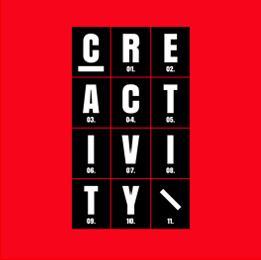
There is a huge need worldwide for creative, constructive thinking that can design the way forward. Many of the major problems in the world cannot be solved simply by identifying and removing the cause. There is a need to design a way forward even if the cause remains in place. As Dr de Bono puts it himself. “The quality of our thinking will determine the quality of your future.” The benefits and advantages of creativity as a corporate and national culture, cannot be understated or underestimated in any way. It´s not a choice anymore as it was 40 years ago, when he first dropped the terminology of “thinking out of the box” in Lateral Thinking. Today CreACTivity synthesizes the synergies of R.O.I (return on investment), T.Q.M (total quality management) and VALUE as a motor for social, political, educational and economic progress.
Creativity is another word for Kaizen. Continuous improvement.

European Year of Creativity and Innovation, Ambassadors Manifesto
![]()
How much Time do you Spend Thinking?
“To build an achieving organizations, you must replace power with responsibility. In the traditional format – the organization of the last 100 years – the internal structure was a combination of rank and authority. In the emerging organization it has to be mutual understanding and responsibility.”
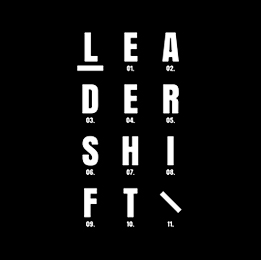
LeaderSHIFT as we understand it has to do first and foremost with personal responsibility, every member of the family, group and organization needs to be given the tools, resources and encouragement to be the best version of themselves as a “modus operandi”. Excellence is a personal commitment above and beyond organizational TQM criteria. It´s the commitment to the disciplined habit of quality. It is dissatisfied with “good”, it wants “great”, as Stanford professor Jim Collins very aptly advocates. LeaderShift is a personal philosophy, far removed from the traditional view of hierarchy.
The new breed of egoless leaders are those who cascade their best management procedures so that they can cascade more leaders. They work shoulder to shoulder with their teams, and are the first to get their hands dirty by getting involved in what´s happening across the board, also learning in the process. Wise men and women who admit to failure more freely than to success. These are leaders endowed with vision, on the fast track into the 21st Century, committed to making the most of all available intellectual and emotional capital, conscientiously nurturing the individual and collective potential within their organization. “Sapere Aude” encouraged Emanual Kant, at the pinnacle of the Enlightenment – “Dare to be Wise, dare to use your own Intelligence”. Like orchestra directors, the leaders who make a difference are those with the strategic foresight to liberate the wisdom of every single note, within every single head of every single team member. They ensure that a Creative Culture is a common language, a mental software code. Part and parcel of the corporate DNA, systematic strategic thinking becomes part of the daily procedures, not only at the office, but also at home. This DNA includes personal and collective alignment to shared values, simplicity, time-management, pro-activity, collaboration, contribution, objectivity, self control, emotional intelligence, respect and the sharp capacity to focus.
However, each and every member of the organization also has the responsibility to bring forth his/her best leadership skills, for the benefit of the greater good. The total is always greater than the sum of the parts. The Blue Hat role in the Six Thinking Hats is one of the most potent leadershift converters – it proves that given the chance to manage responsibly, anyone has the capacity to lead a group, notwithstanding rank or title. As long as the team is given the time and space to learn the entire process, and practice. Practice is essential. Practice makes perfect.
“Quality means doing it right, when no one is looking.”
“We are what we repeatedly do, excellence then is not an act, but a habit.”
Churchill Club Legendry Leader Award Speech
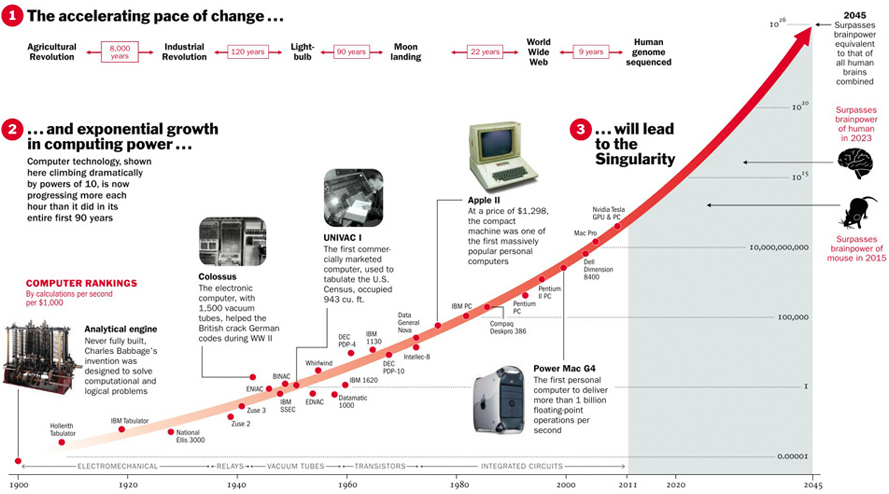
* Source: University of Maryland MOOC
“New Economy, New Mandate, New Story.”
According to recent reports 90% of traffic in 2017 will be video, whereas the amount of data stored is doubling every 18 months. Social media sharing has doubled between 2011 – 2013. That newfound knowledge and technology is, in turn, giving the everyday person more power than ever before: more purchasing power, more political power, more social power. What does this mean for our future? How does this shift affect businesses, and how should companies react? Although we can all vouch for the uncertain question mark the future holds, one certainty in particular has made its point: we’re in the midst of a radical shift — technologically, socially, politically, scientifically, and perhaps even anthropologically. According to Juan Enriquez in his book “HomoEvolutis”, we are on the threshold of mutating our very gene pool into something else. Because we now have the scientific means to do so. We are witnessing a new renaissance which cannot be simply observed from the gallery, it´s a hands on experience. It means being alert, having a radar up and having the capacity to react as necessary. Jeff Bezos of Amazon, had his radar up when he was struck by a prediction in 1994 – that internet business would grow by 2.300% a year! Today it is the world´s largest online retailer, and it all started as a dream in a garage in Washington.
Our definition of futurology is: anticipating what is go ing to happen next, or, better still, designing and inventing it oneself. According to Wikipedia: “it is the study of postulating possible, probable, and preferable futures and the worldviews and myths that underlie them. There is a debate as to whether this discipline is an art or science”.
We believe it is a science, a discipline that is integrated into the creative radar. Future Scenario analysis and Foresight are two such disciplines. Lateral Thinking is another one. As are the elastic 360º processes of the Six Hats with its probabilistic elements, and Visionary Videos. Exponential change is affecting us at a rate which has no precedent the history of the world. Coping with the dizzying speed means training for it, like astronauts learn how to beat gravity. Too many are going to be left behind simply because the capacity to react is still anchored in the last century. Adapt and adopt is the antithesis of fear of change. And change is the very story of our species, we all know it is inevitable. The question is, how will you leave your mark on this near and distant future – at home, at the office, with the education of your children? “I believe that within the next 50 years more will happen to make better use of our best resource than in the last 2000 years.” 
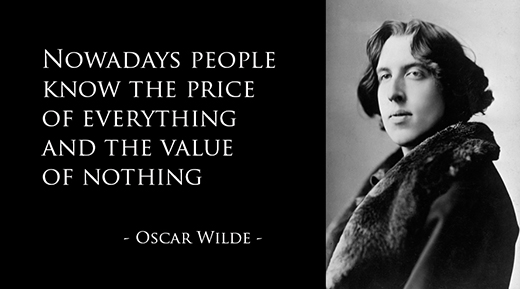
Adding value, delivering value and designing compelling value propositions lie at the core of decisions and competitive advantage.
Values are the skin that you inhabit. It´s what you and your community stand for. However all too often they go unnoticed either because they have not been formally recognized, or because the culture is a value atheist. “What is Thinking is concerned with Truth, What Can Be Thinking is Concerned with VALUE”. There are two (2) sides to the value coin in terms of understanding its meaning fully. The first one is related to the very backbone of who we are, what we stand for, where we come from. The second one is the value/s we deliver based on the first premise. They go hand in hand. Decision making requires value recognition and evaluation. Ethical, environmental, organizational values are important pointers in terms of how we move forward in business, in politics, at school. Values have unfortunately become a common terminology, overused and under rated, with the risk of being taken for granted and treated superficially. According to philosopher author Ken Wilbur, the new shift to cutting edge evolution will move up a tier because of a new integrated set of values which will eventually be adopted globally.
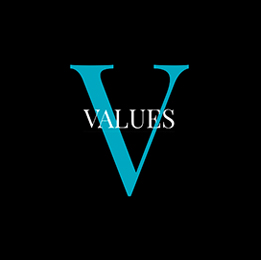
The values we deliver need to be designed, which makes them part of the creative thinking process. They need to be engineered and perfected, before they can go to market. If 80% of data is called DARK DATA (as it is unstructured) VALUE DATA is the next big thing. How can we extract the value of all this information? The skills taught in Six Value Medals™ quickly but thoroughly scan for values, prioritize which values are the most important to pursue, and then ensure that top values are addressed and maximized every step of the way. It’s like putting on a pair of glasses with six lenses, one for each of six important value categories. Too often, organizations cannot articulate the basis for their decisions. As a result, they may fail to notice and resolve conflicts in values that have a negative impact on employees, the organization, clients, community relationships, and more. Until now there has not been a concrete way to assess the impact that a decision may have on our attempts to create and protect value. When employees can scan, identify and prioritize values, they become vital partners in growing your business. There is a very close link between perception and value. All values have to be perceived to be valuABLE. If you look at something in one way it may be one type of value. If you look at the same thing in a different way it may be another type of value. Doing a 360º scan to check for them takes away the blinkers.
“It´s not enough to know that values are important, we need better ways of perceiving value.”
Edward de Bono
